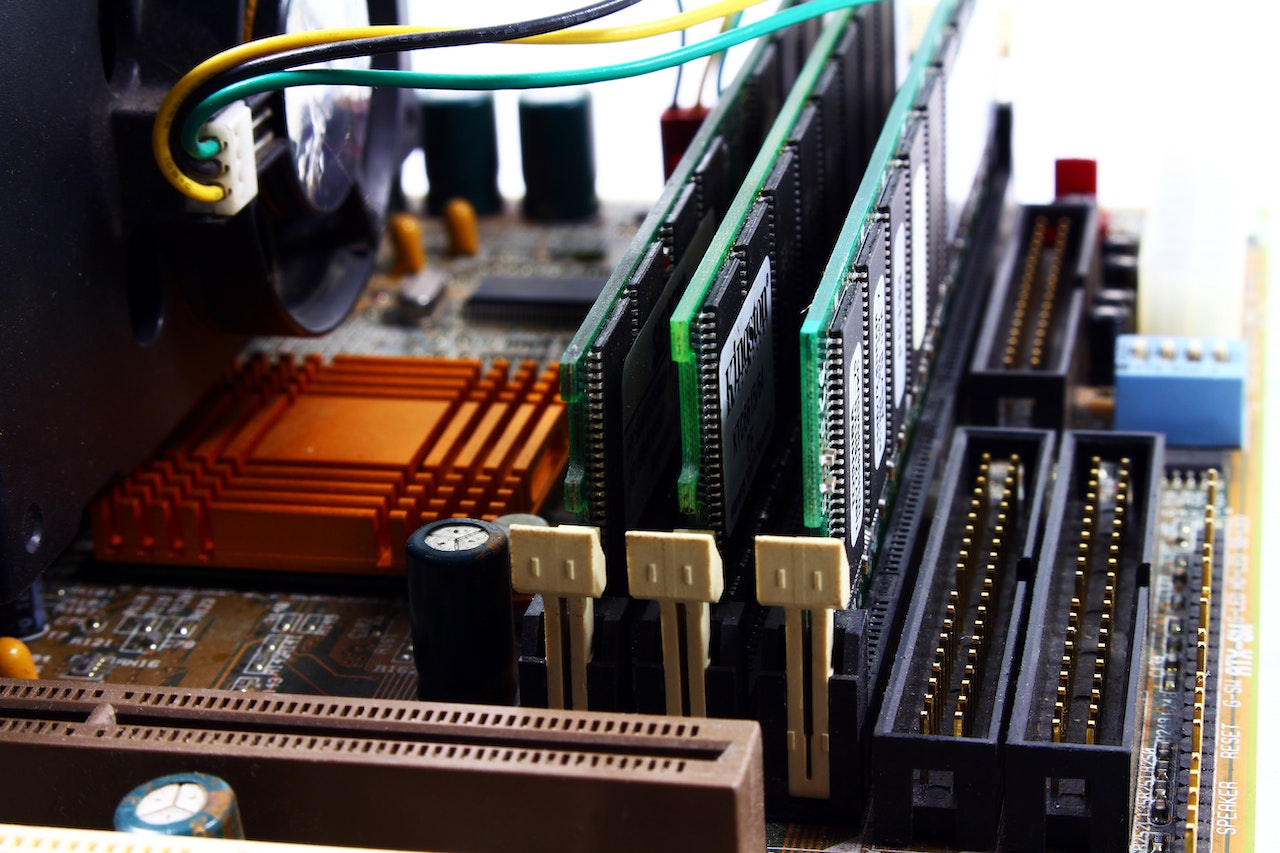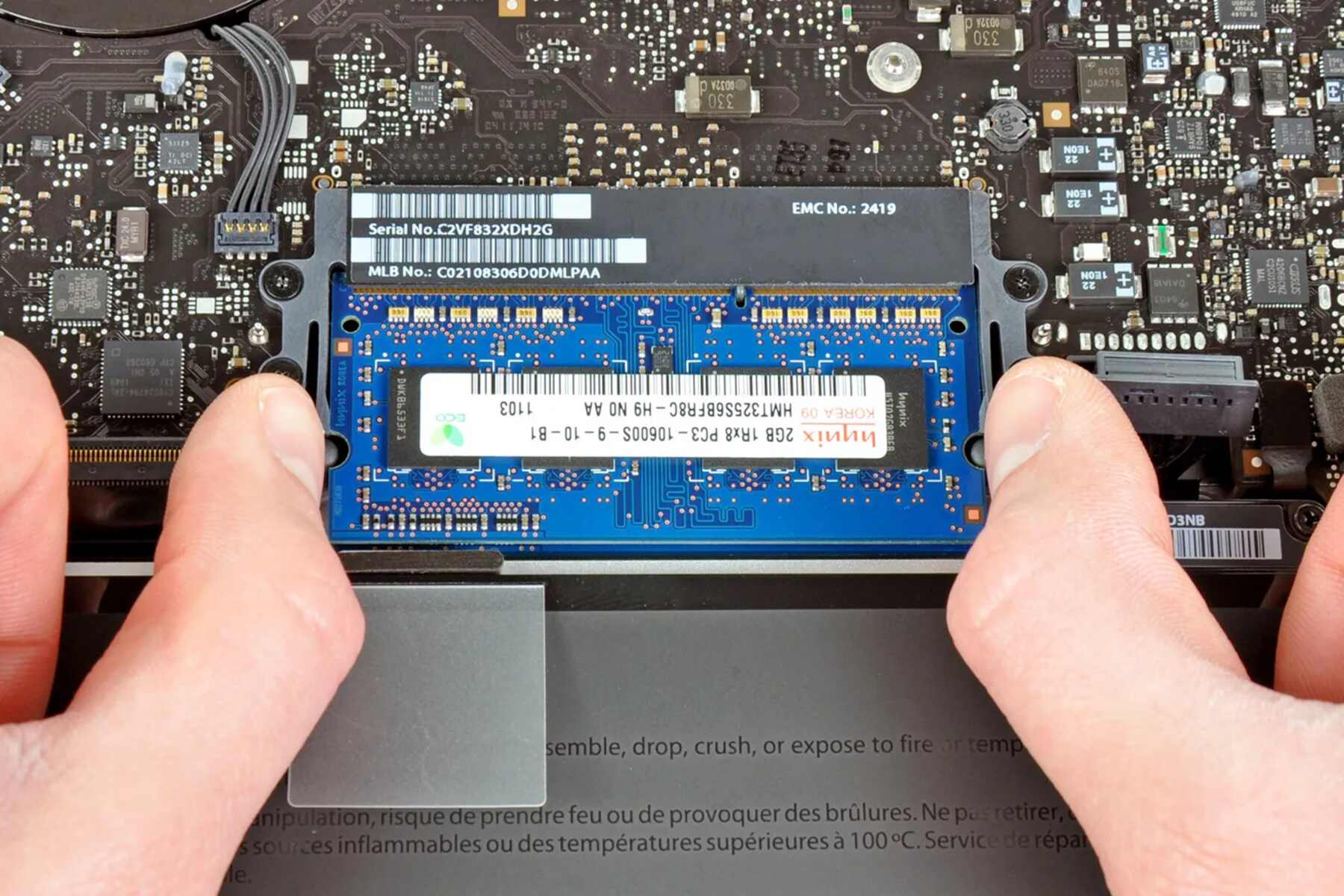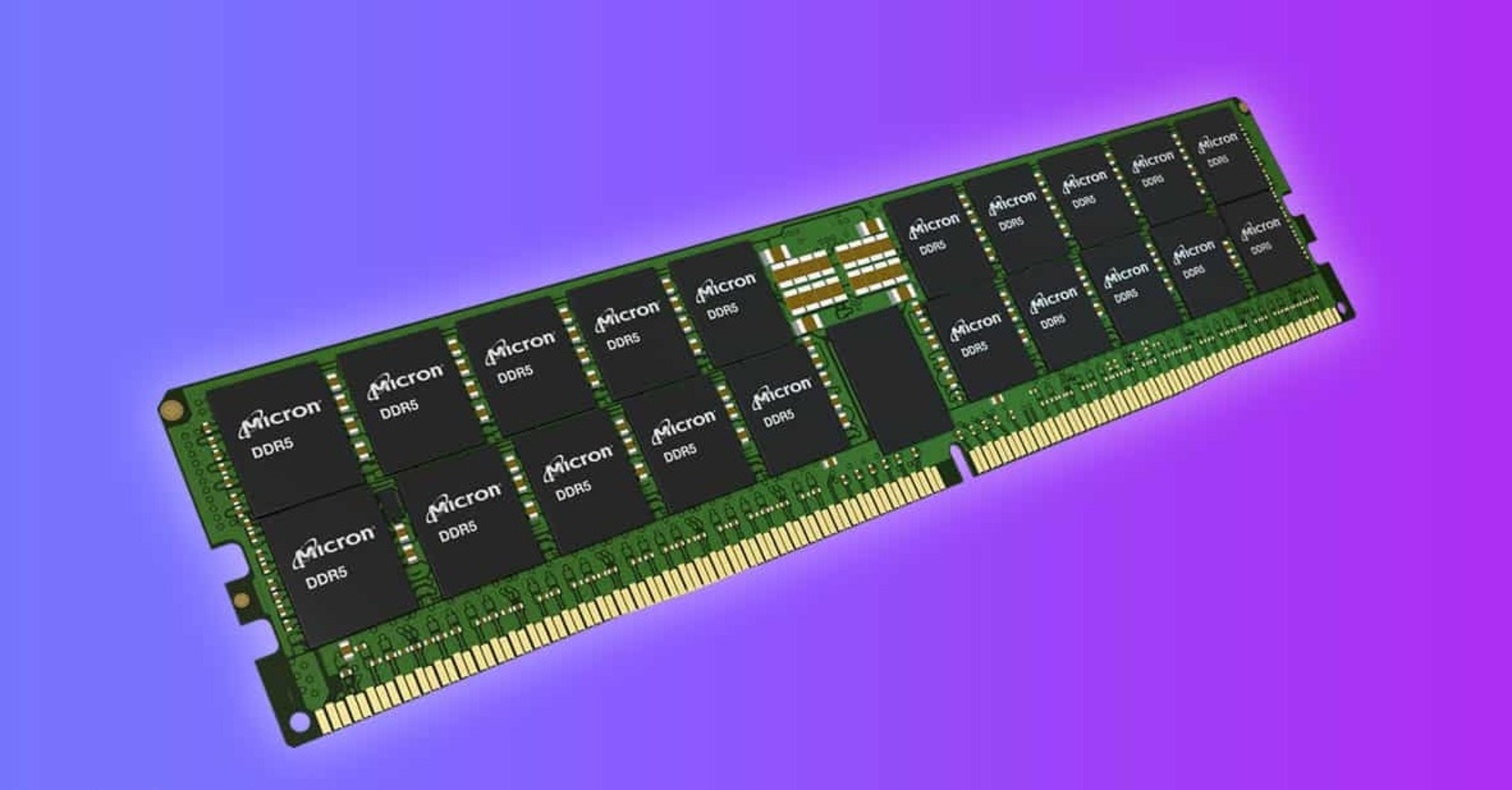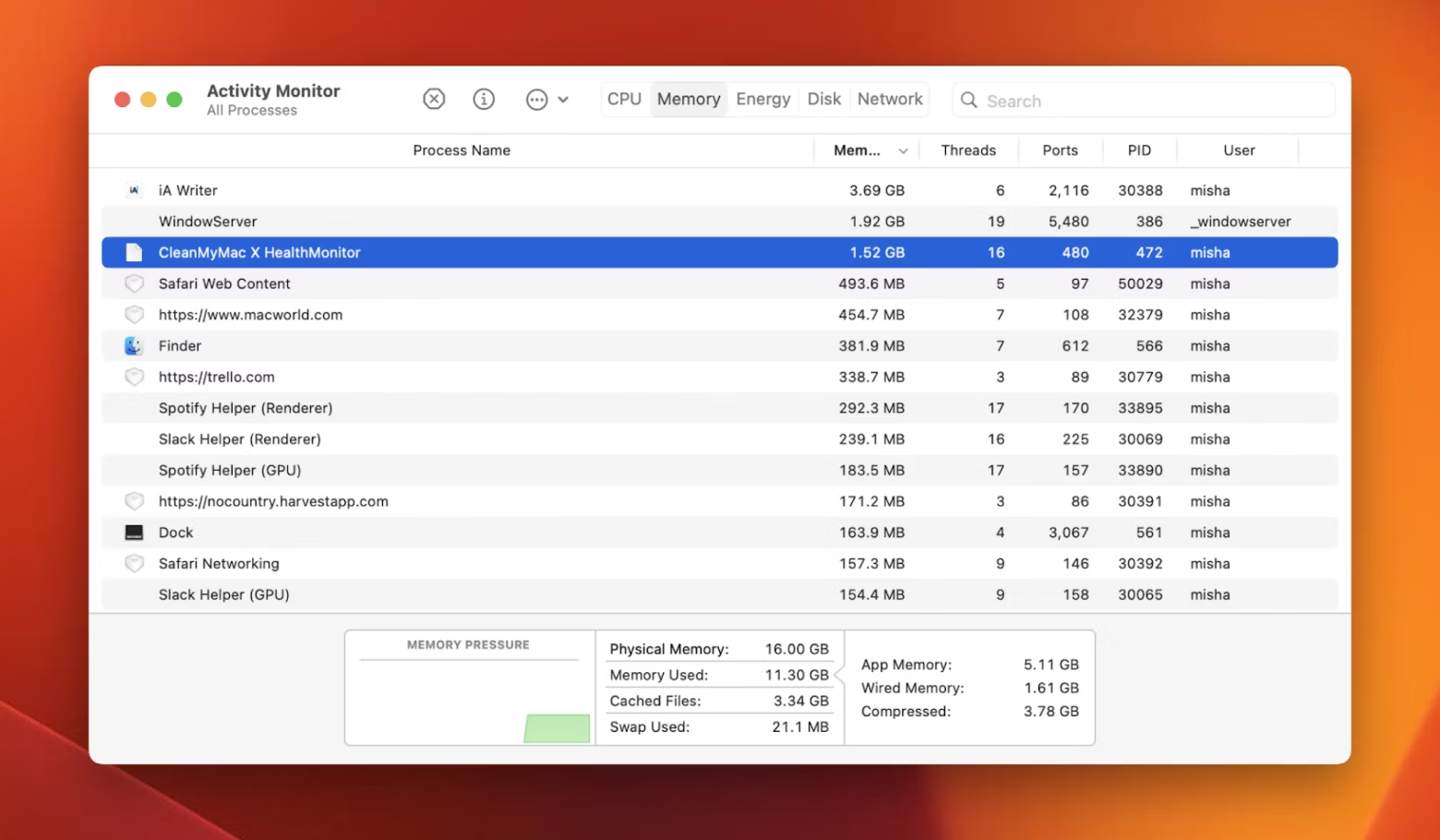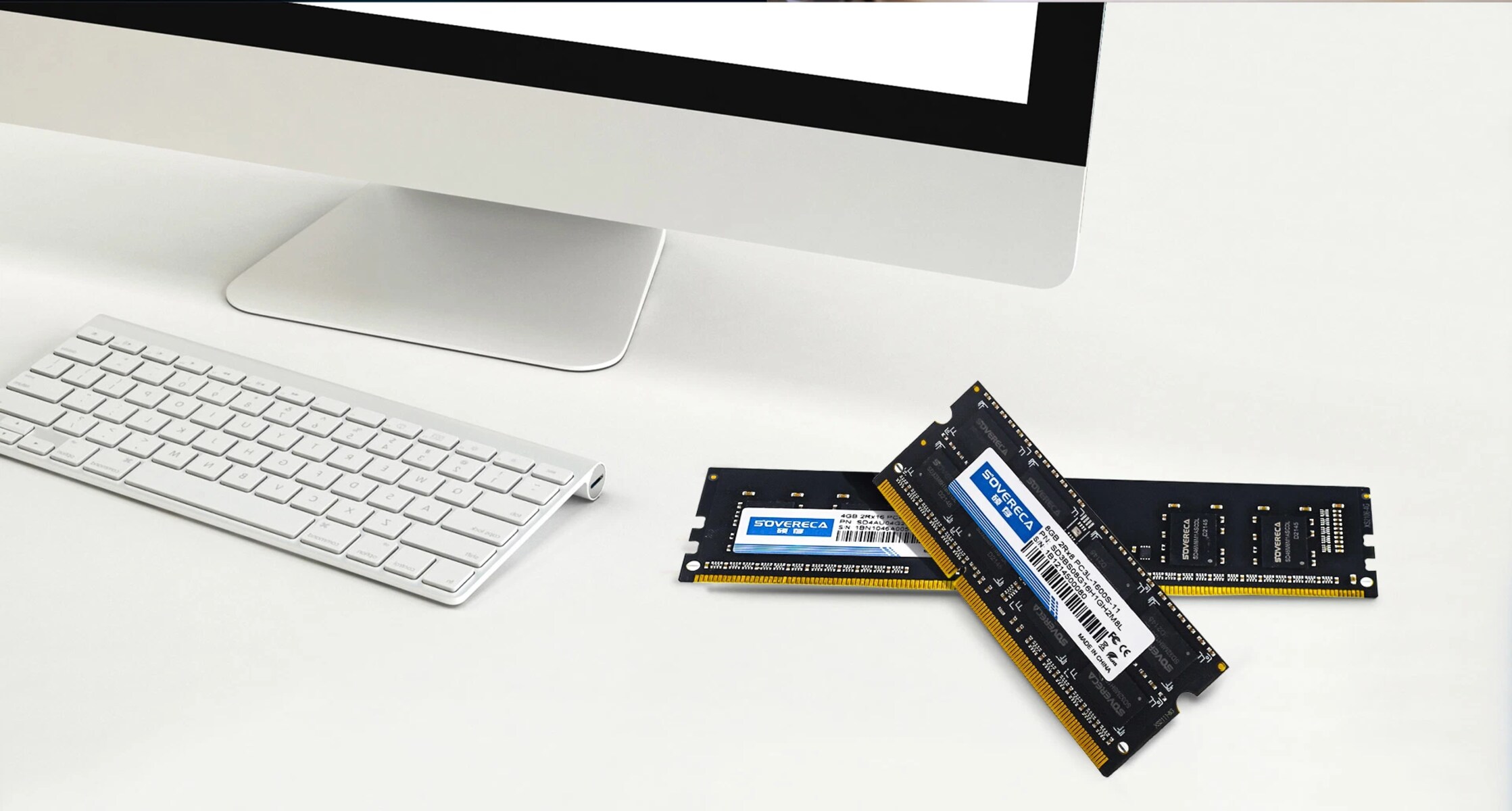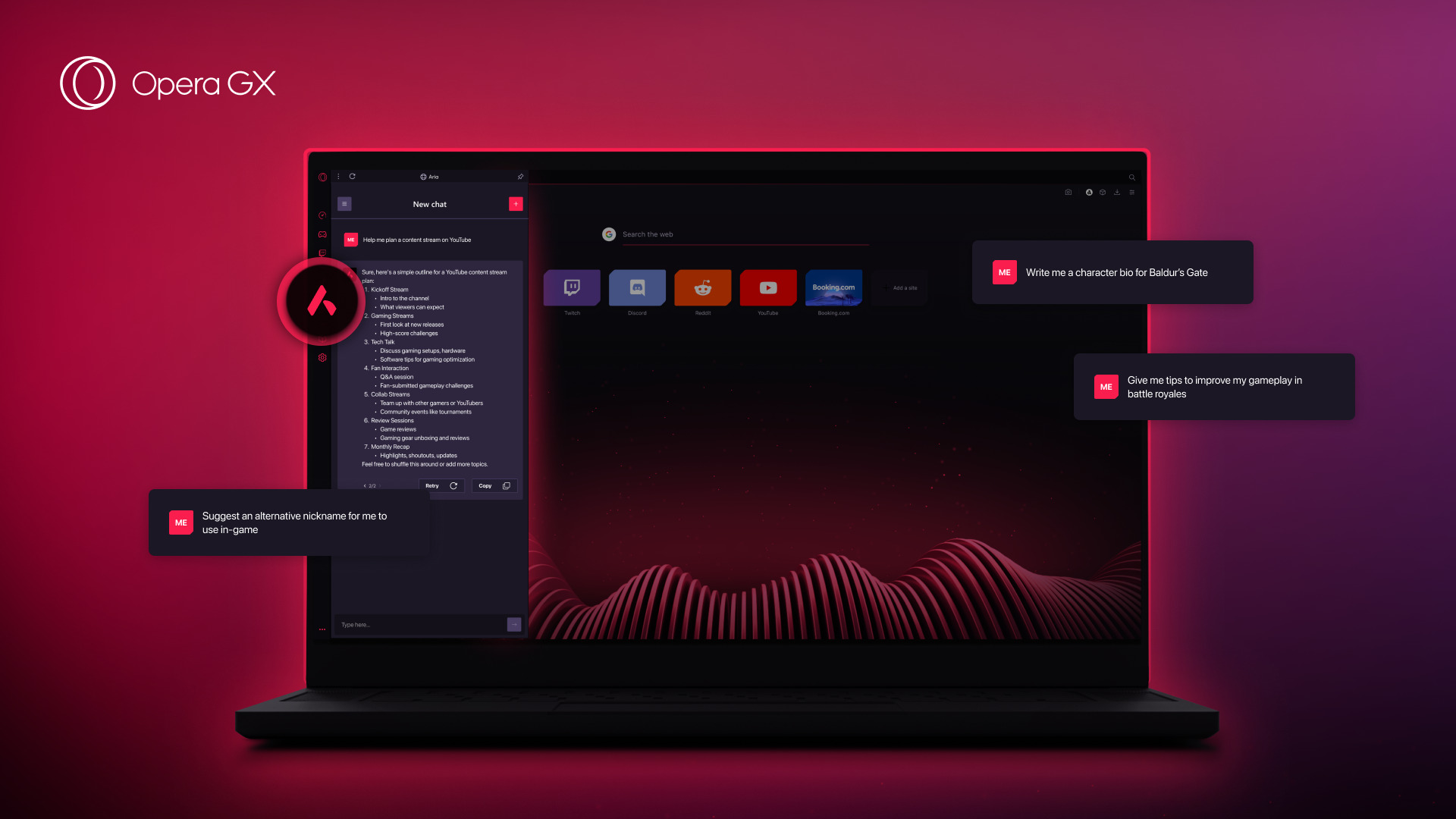Introduction
Welcome to this guide on how to lower your RAM usage. If you’ve ever experienced your computer slowing down or freezing due to high RAM usage, you know the frustration it can cause. Random Access Memory (RAM) is an essential component of any computer, responsible for storing data that the processor needs to access quickly for immediate use. However, when RAM usage is too high, it can negatively impact your system’s performance and lead to a decrease in productivity.
Understanding how to manage your RAM usage effectively is crucial for maintaining optimal computer performance. In this guide, we will explore various methods to help you reduce your RAM usage and ensure your system runs smoothly.
Whether you’re a casual user or an avid gamer, these tips can be applied to all types of computers and operating systems. By following these strategies, you can minimize RAM usage and improve overall system responsiveness.
Please note that reducing RAM usage may require you to make some adjustments to your computer settings and usage habits. However, the benefits of having a well-optimized system will far outweigh any initial inconvenience.
In the following sections, we will go through ten practical tips that can help you lower your RAM usage. This guide will cover both basic and advanced techniques, allowing you to choose the approach that best suits your needs and technical expertise. By implementing these strategies, you can ensure that your computer operates efficiently and smoothly, even when running resource-intensive applications.
So, if you’re ready to optimize your computer’s RAM usage and give your system a performance boost, let’s dive into the details and start taking control of your computer’s memory usage.
Understanding RAM Usage
Before we delve into the strategies for lowering RAM usage, it’s important to have a basic understanding of how RAM works and why it’s essential for your computer’s performance. RAM is a volatile type of memory that stores data that the processor actively uses during operation. It allows for quick access to information, enabling your computer to run programs and perform tasks efficiently.
When you open a program or file, it gets loaded into the RAM so that the processor can access it quickly. The more programs you have open simultaneously, the more RAM is required to keep them running smoothly. When your RAM usage exceeds its capacity, your computer starts using virtual memory on the hard drive, which is much slower and can lead to a decrease in performance.
RAM usage can vary based on several factors, including the number of programs running, the size of the files you’re working with, and the complexity of the applications you’re using. Resource-intensive tasks like video editing, gaming, and running virtual machines can quickly consume a significant amount of RAM.
Monitoring your RAM usage can provide valuable insights into how your system is performing. You can use built-in tools like Task Manager on Windows or Activity Monitor on macOS to check which programs or processes are using the most memory. This information will help you identify memory-hogging applications and make informed decisions on how to optimize your system.
It’s also important to note that different operating systems and versions may have varying RAM requirements. Therefore, it’s essential to consider the specific recommendations provided by the operating system’s manufacturer and software developers.
Now that we have a solid foundation on the importance of RAM and how it affects your computer’s performance, let’s explore some effective strategies to lower your RAM usage. By implementing these techniques, you can ensure that your system runs smoothly and efficiently, even with intensive tasks and resource-demanding applications.
Close Unnecessary Programs and Background Processes
One of the most straightforward ways to reduce RAM usage is to close any unnecessary programs and background processes that might be running on your computer. Many times, we tend to leave applications open or forget about background processes that continue to consume memory resources.
Start by examining the programs running in your taskbar or system tray. Right-click on each program and select “Close” or “Exit” to shut them down. These are often applications that automatically start when you boot up your computer and continue running in the background.
Additionally, you can use the Task Manager (Ctrl+Shift+Esc for Windows users or Command+Space and search for “Activity Monitor” for macOS users) to identify resource-consuming applications and terminate them. Sort the processes by memory usage and close the ones that are using a significant amount of RAM but are not essential for your current tasks.
Some programs may have components or background services that continue to run even after closing the main application window. To completely shut down these processes, check for options like “Exit,” “Quit,” or “Stop” within the program’s settings or preferences.
Another useful tool is the “msconfig” command for Windows or “Activity Monitor” for macOS. These tools allow you to control the startup programs and services on your computer. Disable any unnecessary items that start up automatically to minimize the number of programs using RAM from the moment your computer boots up.
By closing unnecessary programs and background processes, you free up valuable RAM resources for your active tasks. This can significantly improve your computer’s performance and responsiveness, especially if you regularly work with multiple applications simultaneously or resource-intensive programs such as video editors or graphic design tools.
Remember to only close programs that you are not actively using or those that are not essential to your current work. Be cautious when terminating processes, as some may be critical for your operating system or other applications to function properly.
Identify and Remove Memory-Hogging Applications
Another effective strategy to lower your RAM usage is to identify and remove memory-hogging applications from your system. These are programs that consistently use a large amount of RAM, even when they’re idle or not actively being used.
Start by checking the task manager or activity monitor, as mentioned earlier, to identify applications that are consuming a significant amount of memory. Look for programs that consistently occupy a large portion of your RAM, even when you’re not actively using them. These could be resource-demanding applications such as video editors, 3D modeling software, or games.
If you notice that certain programs are frequently using a substantial amount of RAM, consider alternatives that are less memory-intensive. Look for lightweight versions or alternative software that can provide similar functionality without consuming as much memory. There are often open-source or less resource-heavy alternatives available for popular software applications.
Another option is to check for memory usage settings within the applications themselves. Some programs may have an option to limit the amount of RAM they utilize. Adjusting these settings can help reduce the overall memory footprint and free up RAM for other applications.
It’s important to keep your software up to date, as newer versions often come with improvements in memory optimization. Developers regularly release updates that fix bugs and enhance performance, so make sure to install the latest updates for your applications.
If you find that certain applications are consistently using excessive amounts of RAM and there are no viable alternatives or settings adjustments available, you may need to consider uninstalling them. Removing memory-hogging applications that you no longer use or need can free up valuable RAM resources and improve overall system performance.
Before uninstalling any programs, it’s recommended to back up your data and ensure that you won’t lose any important files or settings. Additionally, check for any associated services or drivers that may need to be removed as well.
Remember to use caution when removing applications, as some may be critical for the functionality of your system or other dependent applications. Consider seeking guidance from official documentation or technical support if you’re uncertain about the consequences of uninstalling certain programs.
By identifying and removing memory-hogging applications, you can effectively reduce RAM usage and optimize your system’s performance. This will help ensure that your computer runs smoothly and efficiently, even when juggling multiple tasks or running resource-intensive applications.
Disable Visual Effects and Animations
Visual effects and animations can add a visually appealing touch to your operating system, but they can also consume a significant amount of RAM. Disabling or reducing these effects can help lower RAM usage and improve overall system performance.
On Windows, you can access the visual effects settings by right-clicking on the “This PC” or “My Computer” icon, selecting “Properties,” and then clicking on “Advanced system settings” on the left-hand side. In the “System Properties” window, under the “Advanced” tab, click on the “Settings” button in the “Performance” section. Here, you can choose to adjust the visual effects manually or select the “Adjust for best performance” option to disable all unnecessary effects.
On macOS, go to “System Preferences” and click on “Accessibility.” Then, select “Display” in the left-hand sidebar and check the box that says “Reduce motion” to disable certain visual effects and animations.
By disabling visual effects, you minimize the graphical load on your system, freeing up RAM that would have been used to render these effects. This can result in a noticeable performance boost, especially on older or less powerful machines.
Furthermore, disabling or reducing system animations, such as the opening and closing of windows or the animation when switching between applications, can contribute to minimizing RAM usage. These animations require memory to run smoothly, so reducing or disabling them can help conserve system resources.
While turning off visual effects and animations may make your system appear less visually appealing, keep in mind that the goal is to optimize performance and reduce RAM usage. You can always re-enable these effects later if desired.
It’s worth noting that certain applications and software may have their own visual effects settings. Take the time to explore the options within your most frequently used applications and turn off any unnecessary animations or visual enhancements.
By disabling visual effects and animations, you can reduce the strain on your system’s resources, specifically your RAM. This allows for a more efficient allocation of memory to the programs and tasks that require it, resulting in improved overall system performance.
Clean Up and Organize Your Files
Over time, your computer’s hard drive can become cluttered with unnecessary files and data that occupy valuable disk space and can contribute to higher RAM usage. Cleaning up and organizing your files can help free up disk space and indirectly reduce RAM usage.
Start by removing any files that you no longer need or use. These could include old documents, downloaded files, or temporary files that are no longer necessary. You can use the built-in disk cleanup tool on Windows or third-party software like CCleaner to scan and remove unnecessary files. On macOS, you can use the built-in Disk Utility application to clean up your disk.
In addition to cleaning up files, organizing your data can also contribute to improved system performance. Create logical folders and subfolders to categorize and store your files in a structured manner. This makes it easier to locate files when needed and prevents unnecessary clutter on your desktop or in other directories.
Uninstalling unused applications is another important step in cleaning up your system. Over time, you may accumulate a number of applications that you no longer need, which can take up valuable space on your hard drive, as well as consume RAM resources. Go through your installed programs list and uninstall any applications that you no longer use or need.
Regularly emptying the recycling bin or trash on your computer is essential to ensure that deleted files are permanently removed from your system. When you delete files, they are often moved to the recycling bin or trash, and they continue to consume disk space until the bin or trash is emptied.
By cleaning up and organizing your files, you can free up valuable disk space, which indirectly helps reduce RAM usage. When your hard drive has sufficient free space, it allows for more efficient operation of virtual memory, which can lead to improved system performance and lower RAM usage.
Keep in mind that performing regular file cleanups and organization should be included as part of your routine system maintenance. By establishing good file management practices, you can maintain a clutter-free and optimized system, ensuring that your computer runs smoothly and efficiently.
Adjust Virtual Memory Settings
Virtual memory is a space on your computer’s hard drive that is used as an extension of physical memory (RAM). When your RAM becomes fully utilized, the operating system uses virtual memory to temporarily store data that would typically reside in RAM. Adjusting the virtual memory settings can help optimize RAM usage and improve overall system performance.
On Windows, you can access the virtual memory settings by right-clicking on “This PC” or “My Computer,” selecting “Properties,” and then clicking on “Advanced system settings” on the left-hand side. In the “System Properties” window, under the “Advanced” tab, click on the “Settings” button in the “Performance” section. In the ensuing dialog box, select the “Advanced” tab, and click on the “Change” button in the “Virtual memory” section. Here, you can choose to let Windows manage the virtual memory automatically, or you can select the “Custom size” option and specify a value for the initial and maximum size of the virtual memory.
On macOS, virtual memory is managed automatically by default, so adjusting the virtual memory settings is not typically necessary. However, if you want to manually adjust the virtual memory settings, you can do so by opening the “Activity Monitor,” selecting the “Memory” tab, and clicking on the “Memory” column to sort processes by memory usage. From there, you can identify memory-hogging applications and close them or address any excessive memory usage.
When adjusting the virtual memory settings, it’s important to find the right balance. Setting the virtual memory too low can lead to frequent page file swapping, which can degrade performance. On the other hand, setting it too high may cause your system to allocate more disk space than necessary. It’s generally recommended to let the operating system manage virtual memory automatically, as it is optimized to handle memory allocation efficiently.
If you need to manually adjust the virtual memory settings, consider increasing the size of the virtual memory by specifying a larger initial and maximum size. This can be helpful if you frequently work with memory-intensive applications or run multiple applications simultaneously. However, keep in mind that increasing the virtual memory size means allocating more space on your hard drive, so ensure that you have sufficient disk space available.
By adjusting virtual memory settings, you can optimize the utilization of both physical memory (RAM) and virtual memory, resulting in improved system performance and reduced RAM usage. However, it’s important to be cautious when modifying these settings and to monitor the impact on your system’s overall performance to ensure the best configuration for your specific needs.
Upgrade Your RAM
If you find that your computer consistently struggles with high RAM usage, even after implementing the previous strategies, it may be time to consider upgrading your RAM. Adding more RAM to your system can provide a significant boost in performance and allow for smoother multitasking and running of memory-intensive applications.
Upgrading your RAM involves installing additional memory modules that provide your computer with more physical memory to work with. The process of upgrading RAM varies depending on your computer’s make and model, but it usually involves opening up the computer case and inserting the new RAM modules into the available slots, following the manufacturer’s instructions.
Before upgrading your RAM, it’s important to determine the maximum amount of RAM your system can support. This information can usually be found in your computer’s documentation or on the manufacturer’s website. Additionally, you should check the type and speed of RAM that is compatible with your system to ensure that the new modules are compatible.
Increasing your RAM capacity allows your computer to store more data in memory, reducing the reliance on virtual memory and improving overall system performance. With more RAM available, your computer can handle multiple tasks simultaneously and run memory-intensive applications smoothly without experiencing slowdowns or crashes due to insufficient memory.
Moreover, upgrading your RAM can also future-proof your system, as newer versions of software and operating systems often require more memory to run efficiently. By investing in additional RAM, you can ensure that your computer remains capable of handling future software updates and advancements without experiencing performance issues.
It’s worth noting that while upgrading your RAM can be a cost-effective way to boost performance, it may not always be the solution to all performance-related issues. Other factors like the processor speed, storage type, and overall system configuration can also impact your computer’s performance. Therefore, it’s essential to consider the overall hardware specifications and limitations of your system when evaluating the need for a RAM upgrade.
If you’re unsure about how to upgrade your RAM or want assistance in selecting the right RAM modules for your system, consider consulting with a computer technician or reaching out to the manufacturer’s customer support for guidance.
By upgrading your RAM, you can significantly improve your computer’s performance and reduce reliance on virtual memory. More RAM allows for smoother multitasking and efficient operation of memory-intensive applications. Consider upgrading your RAM if you consistently experience high RAM usage or if you anticipate future performance demands.
Scan for and Remove Malware
Malware, such as viruses, spyware, and adware, can wreak havoc on your computer’s performance and memory usage. These malicious programs can consume system resources, including RAM, leading to higher usage and a decrease in overall performance. Performing regular malware scans and removing any detected threats can help lower RAM usage and improve your system’s security and performance.
Start by using reputable antivirus software to scan your computer for malware. Ensure that your antivirus program is up to date with the latest virus definition files to effectively detect and remove any malicious software. Schedule regular scans or perform on-demand scans to keep your system protected.
In addition to antivirus software, consider using dedicated anti-malware programs that specialize in detecting and removing specific types of malware, such as adware or spyware. These programs can provide an extra layer of protection and help identify any malware that may have been missed by your antivirus software.
When performing a scan, make sure to scan your entire system, including all drives and external storage devices, to ensure that no traces of malicious software remain. Follow the instructions provided by the antivirus or anti-malware software to quarantine or remove any detected threats.
Preventive measures are equally important in reducing the risk of malware infections. Be cautious when downloading files or programs from untrusted sources, as they may contain hidden malware. Keep your operating system, antivirus software, and other applications up to date with the latest security patches to minimize vulnerabilities that malware could exploit.
Regularly evaluating your browsing habits is also crucial. Be wary of clicking on suspicious links or downloading files from unfamiliar websites or email attachments. These can be methods used by cybercriminals to distribute malware.
By regularly scanning for and removing malware, you can minimize the impact of resource-hogging malicious software on your system’s RAM usage. This ensures that your computer runs smoothly and efficiently, with more available memory for your legitimate programs and tasks.
If you suspect that your computer is infected with malware but are unsure how to proceed, consider seeking assistance from a computer technician or contacting the customer support of your antivirus software for guidance.
Remember, maintaining a proactive approach to malware prevention and regular scanning are crucial for a healthy and optimized computer system. Taking these steps will not only help reduce RAM usage but also safeguard your data and protect your system from potential security threats.
Reduce Browser Tab Overload
Having multiple tabs open in your web browser may seem convenient, but it can significantly contribute to higher RAM usage. Each open tab consumes memory resources, and having too many tabs open simultaneously can overwhelm your system’s memory capacity. To lower RAM usage and improve browser performance, it’s essential to reduce tab overload.
Start by evaluating the number of tabs you have open and consider closing any unnecessary or inactive tabs. Often, we accumulate tabs that we no longer need or haven’t accessed in a while. Closing these tabs can instantly free up memory resources and help your browser run more efficiently.
If you frequently find yourself needing to reference information on multiple websites, consider using bookmarking or saving the tabs for later use. Many browsers offer functionality to bookmark tabs or create bookmark folders, allowing you to access them easily when needed without keeping them open continuously.
Another option is to utilize browser extensions or plugins that help manage tab overload. These tools allow you to save and group tabs, reducing clutter and optimizing RAM usage. Some popular extensions include OneTab, Tab Wrangler, and The Great Suspender. These extensions can temporarily suspend tabs or consolidate them into a single tab for efficient memory management.
Regularly refreshing or reloading web pages can also help prevent excessive memory usage caused by memory leaks. When web pages remain open for an extended period, they may experience memory leakage, causing them to consume more RAM over time. Refreshing the page can help mitigate this issue and free up memory resources.
Consider adjusting your browser’s settings to limit the number of tabs that can be open simultaneously. Most modern browsers have options to control tab behavior, such as limiting the number of tabs that can load at startup or automatically unloading inactive tabs.
Additionally, disabling or reducing browser extensions and plugins can help lower RAM usage. Extensions and plugins add functionality but can also consume significant memory resources. Evaluate your installed extensions and plugins, keeping only those that you actively use and removing any unnecessary or outdated ones.
By reducing browser tab overload, you can improve your system’s RAM usage and overall browser performance. This ensures that your browsing experience remains smooth and responsive, even when working with multiple tabs or engaging in memory-intensive web activities.
Remember to regularly assess your tab usage habits and be mindful of the number of tabs you keep open at any given time. Maintaining a clutter-free browser and optimizing RAM usage will contribute to a more efficient and enjoyable web browsing experience.
Use Lightweight Alternative Programs
Running resource-intensive programs can put a strain on your computer’s RAM resources. If you find that your computer is struggling with high RAM usage, consider using lightweight alternative programs that consume fewer system resources. By opting for lighter software alternatives, you can lower RAM usage and improve overall system performance.
There are often lightweight versions of popular software available that are specifically designed to be more efficient in terms of memory usage. These programs offer similar functionality to their resource-intensive counterparts but require fewer system resources to run.
For example, if you frequently work with image editing, consider using a lightweight image editing program instead of a heavy-duty software like Adobe Photoshop. Some popular lightweight alternatives include GIMP or Paint.NET. These programs provide essential editing features without the excessive memory usage of professional-grade software.
Similarly, if you work with office documents, consider using lightweight office suites like LibreOffice or Google Docs instead of resource-heavy programs like Microsoft Office. These alternatives offer robust functionality while being more lightweight, resulting in lower RAM usage.
Another area where lightweight alternatives make a significant difference is internet browsers. Some browsers are notorious for being memory hogs, but there are lightweight alternatives available that prioritize efficiency. Consider using browsers like Mozilla Firefox or Google Chrome’s “lite” versions, such as Firefox Quantum or Chrome Lite. These lightweight browsers can provide a smoother browsing experience while consuming less memory.
When searching for lightweight alternatives, consider exploring open-source software options, as they tend to focus on efficient resource usage. Additionally, read reviews and user experiences to ensure that the alternative software meets your specific needs and requirements.
Keep in mind that lightweight alternatives may not always offer the same level of features or advanced functionality as their resource-intensive counterparts. However, they often provide a suitable alternative for everyday tasks and can significantly reduce RAM usage.
By opting for lightweight alternative programs, you can minimize the strain on your system’s resources, particularly RAM. This allows your computer to operate more efficiently, ensuring a smoother and more responsive user experience, even with tasks that traditionally require intensive memory usage.
Consider evaluating the programs you frequently use and exploring lightweight alternatives that can provide comparable functionality without the excessive memory footprint. Implementing these alternatives can make a significant difference in reducing RAM usage and optimizing your system’s overall performance.
Regularly Restart Your Computer
Regularly restarting your computer is a simple yet effective way to lower RAM usage and maintain optimal system performance. When you keep your computer running for extended periods, it can accumulate temporary files and background processes that consume memory resources. Restarting your computer clears these temporary files and frees up memory, ensuring a fresh start for your system.
Restarting your computer also allows the operating system to release any unnecessary processes or services that may be running in the background. It refreshes the system and helps prevent memory leaks or inefficient memory allocation.
Consider making it a habit to restart your computer at least once a week, especially if you frequently use memory-intensive applications or multitask extensively. By doing so, you can minimize the chances of encountering performance issues related to high RAM usage.
If you notice your computer becoming sluggish or experiencing memory-related errors, a restart can be an immediate solution. It allows for a clean slate, allowing your computer to allocate memory more efficiently and ensuring that RAM is properly utilized for active tasks.
When restarting your computer, it’s a good practice to close all open programs and files beforehand. This ensures that no processes are left running in the background that could potentially consume memory resources after the restart.
Additionally, restarting your computer can improve system stability and resolve any software conflicts that may arise. It gives your computer a fresh start, which can help in resolving minor issues that can accumulate over time.
Keep in mind that restarting your computer will temporarily interrupt any ongoing tasks or processes. Therefore, it’s important to save your work and close any open programs before initiating a restart.
In cases where you need to keep your computer running continuously for specific tasks or server purposes, consider scheduling regular restarts during periods of lower activity. By automatically restarting your computer on a schedule, you can ensure that memory resources are refreshed without causing any interruptions during critical operations.
By regularly restarting your computer, you can reduce RAM usage, clear temporary files, and optimize system performance. It’s a simple yet effective way to ensure your computer runs smoothly and efficiently, providing you with a more responsive and productive experience.
Conclusion
Managing your computer’s RAM usage is crucial for maintaining optimal system performance. By implementing the strategies outlined in this guide, you can lower RAM usage, improve responsiveness, and ensure efficient resource allocation.
Throughout this guide, we have explored various methods to minimize RAM usage, including closing unnecessary programs and background processes, identifying and removing memory-hogging applications, disabling visual effects and animations, cleaning up and organizing files, adjusting virtual memory settings, upgrading your RAM, scanning for and removing malware, reducing browser tab overload, using lightweight alternative programs, and regularly restarting your computer.
Each strategy plays a vital role in optimizing RAM usage and enhancing overall system performance. By implementing a combination of these techniques, you can tailor your approach to suit your specific needs and system configuration.
Remember, when it comes to managing RAM usage, it’s essential to strike a balance between efficient resource allocation and usability. Some strategies may require trade-offs, such as reducing visual effects for improved performance, or using lightweight alternative programs that may not offer the same advanced features as resource-intensive applications. However, the benefits of lower RAM usage and improved system responsiveness make these adjustments worthwhile.
Regular maintenance and awareness of your system’s RAM usage are key. With time, your computing requirements may change, and applications may evolve, resulting in different demands on your system’s resources. Periodically reassessing your RAM usage and implementing the strategies discussed in this guide will help you maintain an optimized and efficient computer system.
By properly managing your RAM usage, you can ensure that your computer operates smoothly, even when running memory-intensive tasks or juggling multiple applications. Whether you’re a casual user or a power user, these strategies will help you make the most of your computer’s resources and enhance your overall computing experience.
So, take control of your RAM usage, follow the tips and techniques outlined in this guide, and enjoy a faster, more efficient, and more enjoyable computing experience.







